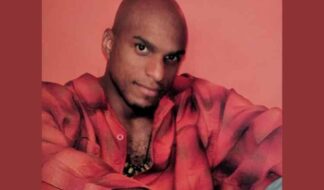By Gwendolyn Ann Smith

The cover is overall stark, but arresting. The model, with flowing brown tresses, is sitting somewhat uncomfortably on a barely visible stool, looking directly at the camera. She is wearing a white, satin body shaper. Behind her, fogged metallic walls pick up her blurred reflection.
Across her midriff is a simple phrase, "Call me Caitlyn."
The issue is the latest in a series of "coming out" moments for Caitlyn Jenner, beginning with In Touch Weekly's tawdry photoshopped cover and progressing to a recent Diane Sawyer interview. There will be much, much more to come, no doubt, with a reality program waiting in the wings. Indeed, Jenner is no babe when it comes to the media, starting back in the days of Olympic gold and Wheaties boxes up to her part in the world of the Kardashians.
The cover is groundbreaking. Not only is it the first known transperson to grace the cover of Vanity Fair, but at age 65, Caitlyn Jenner is also the oldest woman to achieve the same honor. The photo by Annie Leibovitz is beautiful, lacking the sort of "shock value" one might normally expect the straight media to revel in.
Indeed, much of the reporting on the cover has been positive, and Jenner remains on our culture's lips for yet another week, seeing heavy coverage throughout the mass media.
The transgender community itself has had a mixed view of it all — though for the most part, the response has been positive. Many have also considered Jenner's very high-profile transition as a "teachable moment," using her celebrity to springboard additional transgender issues into the public consciousness.
The National LGBTQ Task Force highlighted the stark differences between Jenner's transition and others in a series of online posts. Caitlyn Dewey, with help from Andrew McGill, created a "bot" to automatically correct commentators who chose to "misgender" Jenner.
"'Misgendering,' as this practice is known in the LGBT community, isn't just a style error in violation of AP's own rules," said Dewey in the Washington Post. "It's a stubborn, long-time hurdle to transgender acceptance and equality, a fundamental refusal to afford those people even basic grammatical dignity."
Dewey and McGill sought to challenge this, and while they admittedly only saw very few change their mind on the pronouns they assigned to Jenner, they still felt the project itself was eye-opening, showing that perhaps there is a "seed of a suggestion here… that maybe compromise and dialogue are possible on the Internet."
Perhaps the strongest of the reactions to the Vanity Fair cover within the transgender community was that from Crystal Frasier and Jenn Dolari. I've known both of them for many years, and they were kind enough to take a fair amount of their day answering my questions about their hashtag campaign, #MyVanityFairCover. You can see them all at http://myvanityfaircover.tumblr.com/.
While they've made it clear that they are plenty proud of Jenner for transitioning, they were frustrated with the expectation that transgender women — and indeed, all women — have to adhere to certain beauty standards in order to be taken seriously.
Said Frasier, "The only covers we do see featuring trans women though — Caitlyn Jenner, Laverne Cox, Janet Mock — do focus on the physical beauty of these women (just like magazine covers featuring women inevitably do), and gloss over the accomplishments and skills as human beings. So no, I don't generally think the media offers coverage and humanizing portrayals of trans women unless we happen to be attractive."
"I find it sets an unrealistic expectation of how trans women should look, which sounds awfully familiar if you drop the 'trans' part of that sentence," said Dolari. "For trans women, there's an extra layer of 'passabilty as identity' added to the expectation of beauty — one that very few of us could ever meet. It sets up the idea that if you're not perfectly passable, you're not passing as a woman 'right.' We do come in all shapes and sizes and colors, and by ignoring that, presenting only the best, you not only create issues with beauty, but identity."
Added Frasier, "Trans people who can't conceal our trans-looking traits aren't afforded the benefit of the doubt, don't see ourselves represented anywhere. If we're visibly trans, then we're told we have less value as human beings. The mainstream media likes to focus on the passing ones — the 'success stories' as I've heard a lot of cis people refer to them lately — and I think that pushes very unrealistic expectations for what transition is about and the results that are within the reach of the vast majority of the community. And I especially worry that that message can be damaging to young trans kids who just don't know how to find any other narratives yet."
What they started, initially as a lark they expected to only spread amongst "our friends and a few folks," ignited social media as people took templates created by Frasier and Dolari to create their own Vanity Fair cover. These images show the true diversity of the transgender community: people of all gender presentations, all races and nationalities and all ages have stepped up and shown their face to the world.
For me, I'm glad to see Jenner on the cover, and am more than willing to welcome her into the fold. I also agree with Frasier and Dolari that her beauty did help get her on this cover, though I feel she does have more than a little tenacity and acumen to back her up.
Now is not only Jenner's time, but all of ours. The door is open, and it is time for all of us to step through.










